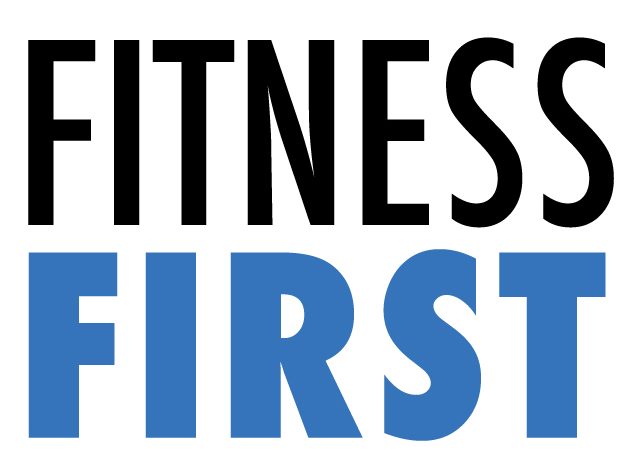
At one time or another, we’ve all made resolutions at the beginning of the new year. It makes sense. It’s a natural time for fresh starts and clean beginnings.
But it seems unfair that January 1st is the only time we allow ourselves the gift of resolutions; of goals we’ll set to improve ourselves over the coming weeks and months.
So we here at Fitness First propose that the end of summer, also known as the time that many head back to school, as another great time for resolutions–a time for fresh starts and building new habits like eating healthier or getting fit.
Because this time of year can be tumultuous for folks, we think it’s a good idea to start setting goals and making plans early. Let’s make eating healthy and exercising regularly a habit BEFORE the arrival of holiday meals and cold weather restrictions.
With that in mind, here are a few tips to help you not only make great resolutions, but keep them.
1. Make your Goals Specific
The key to success for any resolution or goal lies in the details. Setting up a vague goal may leave you unsure of how to get started or how to really determine if you’ve succeeded. When you drill down to something concrete, though, it makes all the other parts of goal setting substantially easier.

Many folks may resolve to “Eat Healthier”. While we should all strive to eat better, this goal provides no clear direction. What is “healthier”? How do you know if you’ve achieved it? To be successful in your goal to eat better, you need to specifically define what needs to improve.
If your concern is sugar intake, then your goal should be, “To limit my consumption of added sugars to be no more than 20 mg.” If snacking is your issue, then, “I will eliminate after-dinner snacks or eating foods after 9:00 PM.” Maybe you think you need to eat more vegetables, so you resolve “to eat at least one serving of leafy green vegetables at least once per day.”
These kinds of goals allow you to not only measure success, but also help you build a plan on how you will achieve them.
2. Make a Plan

Having a goal is good, but to achieve it, you need a plan. If you don’t lay out a specific course of action, with times and triggers defined, then your goals will just remain wistful dreams. We make progress on the path between ourselves and our goals by building a plan and then following it.
Maybe your goal is to be more active. You made it specific by saying that every Monday through Friday you would take 7500 steps. Well now you need a plan for how you’re going to get those extra steps.
In this case, you might resolve to go for a 10-minute walk every week day after lunch. Or maybe you resolve to take the stairs instead of the elevator at work. Or maybe you park at the far end of the parking lot every morning when you arrive at school. Each of these plans involve specific tasks (going for a walk, taking the stairs, parking far away) tied to specific triggers (eating lunch, getting to work, getting to school). Building intention into your daily schedule, combined with the motivation of your resolution, creates a powerful tool for changing your life.
3. Align with your Identity
Resolutions should focus on a specific area within your control. While it can be important to establish big goals, you also need to understand where your existing life and personality will come into conflict.

Let’s say you want to start running a mile everyday. To find the time you’ve decided to get up half an hour earlier than usual. Stop right there. Are you the kind of person who would have no trouble getting up a little earlier? If not, then this plan sets you up for failure. It relies upon you not only commit to running every day, but also to drastically change your sleeping patterns. Trying to introduce a new habit while simultaneously changing an old one will most likely lead to frustration and failure.
If you want to run that mile every day, find a place in your schedule where it will fit: after dinner; over your lunch break; or before heading home at the end of the day. Link this new activity to something you’re already doing, instead of trying to create multiple new habits all at once. And if you can’t find a place in your schedule for a run, then maybe freeing up your schedule should be your goal instead.
4. Understand the Why
Why do you want to make this change? Are you trying to make the soccer team at school? Do you want more energy to play with your kids? It’s important to understand not just what you want to accomplish, but why as well.
From a practical position, knowing the Why could influence the specifics of your goal. If you’re trying to make the soccer team, for example, there are specific performance goals you’re aiming for and a very clear deadline to meet them. If you just want more energy to play with your kids, you have greater flexibility in designing your goal and your plan.

Potentially more important, though, understanding the Why will help with motivation. Because there will be days when you need convincing to stick with your plan. And being able to visualize your Why is a strong means of overcoming those difficult days.
5. Anticipate Motivation Loss
The difficult truth about pursuing any goal or new habit is that you won’t always be excited about pursuing it. There are lots of reasons why you might lose your motivation, but at some point you will lose focus on your goal.
Rather than assume that it won’t happen, anticipate the inevitable. How do you push through, and stay committed, day after day and week after week after the novelty has worn off?

As we said in the previous point, knowing why you’re pursuing this goal will help. You can refer back to that why, that mental picture of yourself at the 5k finish line, to help you push through.
Another method is to build in accountability. Commit to your goal, plan, and deadline publicly online or with your friends and family. You could also institute some sort of fixed penalty (like a donation of $100 to a cause you don’t support) should you fail to keep chipping away.
Structuring your plan to fit within your existing lifestyle will help. Becoming a part of a community that supports your goals (like joining a running club) will help more.
The point is, there are lots of ways to push through times of low motivation, but it’s best to think about those tactics now, when your motivation is still high.
7. Plan for Success
It’s easy to plan for failure, we do it all the time. But planning for success is different. Planning for success assumes that you will achieve your goal and then asks, “what happens next?”. You’ve run that 5k, you’ve made the soccer team, you’ve lost 10 lb… now what?

Well, one option is to look beyond setting goals and focus on the systems instead. A goal is temporary and finite. Pursuing goals either leaves us constantly leaping to the next thing or slowly losing any gains we made because we our goal is gone and there’s no more motivation to keep working.
A system, a way of being, over time becomes a part of who we are. Instead of looking at ourselves and saying, “’Run-a-5k Goal Achieved”, we instead we say, “I’ve finished lunch, it’s time to go for a run, because that’s who I am and what I do.”
Resolve to Be Better
At Fitness First we love helping people be the best version of themselves. We hope that these tips will help you not only set some good resolutions for the End of the Summer/Back-to-School, but also achieve them.
If you want to get access to more of our advice, or find out about great deals on our fitness products, please join our email list at https://www.fitness1st.com/subscribe. And if any of your resolutions are fitness related, you can check out our complete line of fitness gear and equipment at www.fitness1st.com.

